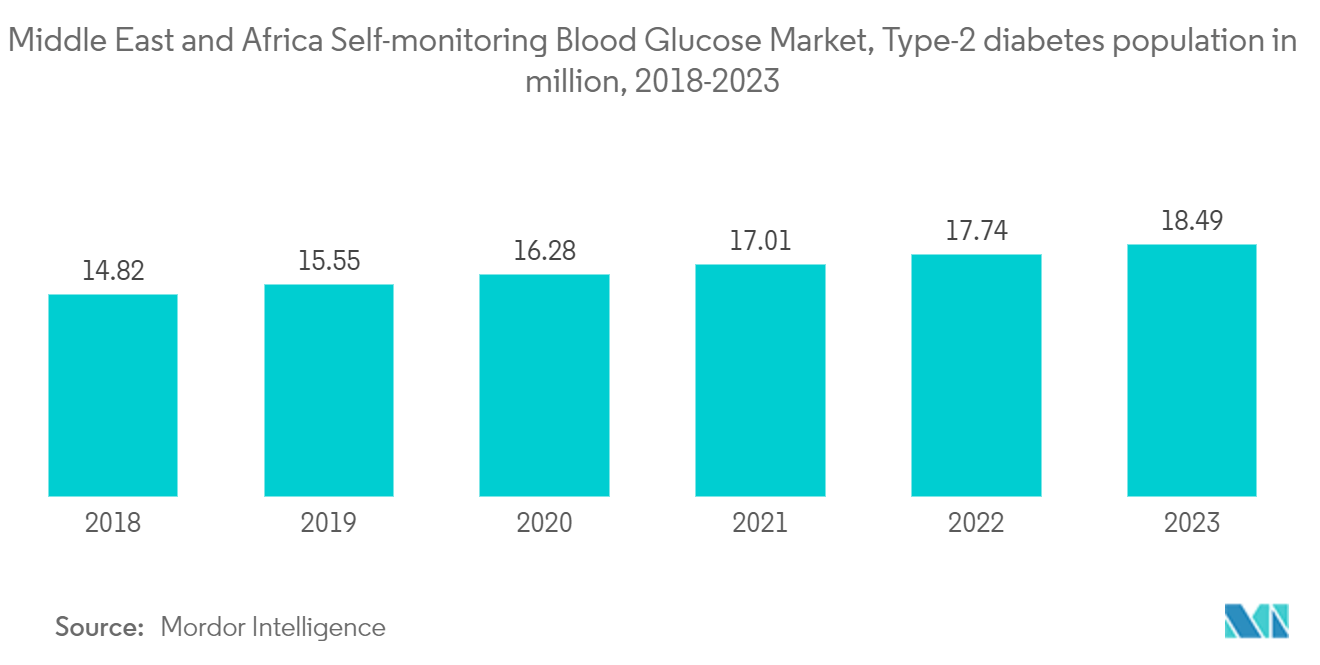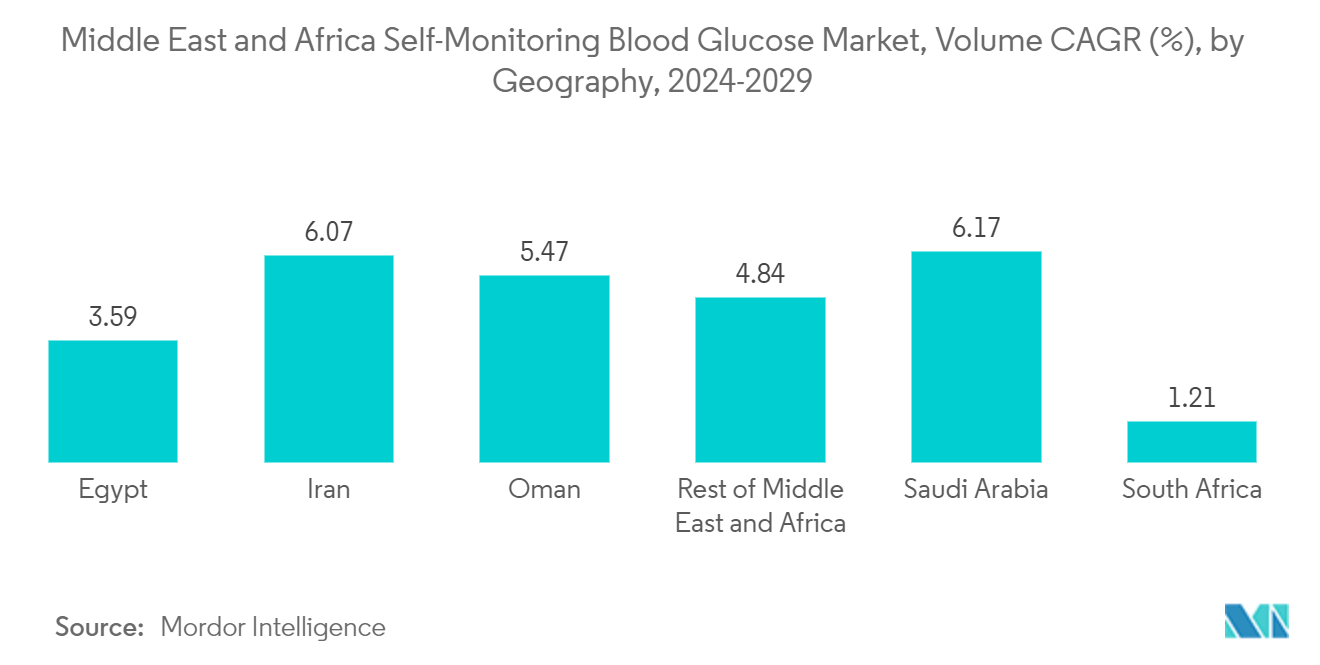Market Trends of MEA Self-monitoring Blood Glucose Devices Industry
Test strips Segment holds Highest Market Share in the current year
Blood glucose test strips are small disposable strips and a key component of blood glucose testing. When blood is placed onto the test strip, it reacts with a chemical called glucose oxidase producing gluconic acid from the glucose in the blood. At the other end of the test strip, the meter transfers a current to the test strip. The test strip includes electric terminals, which allow the meter to measure the current between the terminals.
The current between the terminals changes depending on the level of gluconic acid produced. The blood glucose meter then uses an algorithm to work out the blood glucose level based on the difference in current.
The growth in market volume and share of test strips are expected to be higher than that of glucose meters because of the difference in use-case frequency. The Glucometer is a one-time purchase. However, test strips, on the other hand, are a continuous investment, as a test strip needs to be disposed of after one use.
Thus, it presents a considerable cost impact to the consumers. The market's growth is expected to be spurred by the rising diabetic population. While an average glucose meter lasts anywhere between six months and three years, presenting a one-time cost, during the same time frame, the corresponding use of multiple (in the range of thousands) test strips may occur, causing a recurrent cost impact. Overall, the demand for blood glucose test strips is projected to grow significantly over the forecast period.

Saudi Arabia is expected to register highest CAGR in the Middle East and Africa Self-monitoring Blood Glucose Market over the forecast period
More than one in ten people in Saudi Arabia is living with diabetes, and the prevalence of the disease will almost double by 2045, according to the International Diabetes Federation 2021 report. The report mentioned that 4.27 million people in Saudi Arabia include diabetes. The rise in the number of people with type 2 is driven by a complex interplay of socio-economic, demographic, environmental, and genetic factors. Key contributors include urbanization, an aging population, decreasing levels of physical activity, and increased levels of overweight and obesity.
Saudi Government in July 2022 announced that Saudi Arabia saw a growing demand for quality healthcare services spurred by changes, including an increasing and aging population and a growing prevalence of lifestyle diseases such as diabetes and obesity.
The government and private sector are involved in working on healthcare entities, certifications, and regulations. The government is taking steps to include 100% of Saudi citizens covered by insurance. They are working towards ensuring affordability, access, and quality digital healthcare and primary care with cost-effectiveness.
Therefore, owing to the factors above, the growth of the studied market is anticipated in the Middle East and Africa Region.


